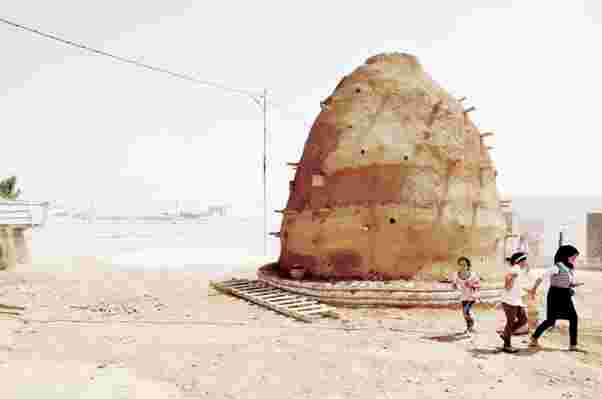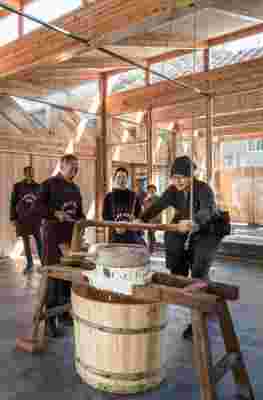“In medical terms, critical care is a specialized branch of medicine dedicated to diagnosing and treating life-threatening conditions,” write Angelika Fitz and Elke Krasny in the introduction to their new book, Critical Care: Architecture and Urbanism for Broken Planet , just published by MIT Press. The authors' metaphor conveys our planet's urgent condition, but the phrase also becomes a play on words as the pair make the case for a new approach to design, which they dub “caring” architecture and urbanism. Weaving together tenets of ecology, economics, social justice, feminism, and politics, Fitz and Krasny lay out a new vision and approach for how architecture and urban planning can help heal, repair, and revive the planet.

In downtown São Paulo, Brazil, Paulo Mendes da Rocha and MMBB Architects converted a former department store into SESC 24 de Maio, a public health, sports, and social center with open-air spaces, a cafe, a theater, and a swimming pool on the roof.
With 21 current case studies from across the globe and 12 essays, Critical Care provides examples of forward-thinking designs that impart hope for the future. “It's crucial to show that there is agency for architects and planners,” says Fitz, who is a cultural theorist and curator and director of the Architekturzentrum Wien in Vienna, where a corresponding exhibit is being shown.
Case studies include a socially and environmentally sustainable village in an earthquake- and landslide-prone area of rural China. Employing local materials, green roofs, biogas technology, vertical courtyards, and collective animal husbandry, the settlement serves as a model for modern rural livelihood. In Barcelona, an initiative to redefine public spaces for pedestrians and cyclists has significantly reduced air pollution and car traffic, making the city more livable. Rather than overhauling the abutting landscape, one development in Vienna embraced its urban wilderness, both maintaining wildlife and giving the public access to a new type of space that's neither forest nor park. And in crowded neighborhoods of Nairobi and São Paolo, vibrant communities have evolved to rectify land and tenancy rights while improving infrastructure. While the projects vary widely in programming and scope, each uses locally appropriate solutions, involves a cross section of stakeholders, and delivers a prototype that can be mimicked.

As part of the 100 Classrooms for Refugee Children campaign, Emergency Architecture & Human Rights worked with local residents and refugees near the Za'atari refugee camp in Jordan to use traditional superadobe construction techniques for building schools at half the cost of a conventional cement-block building.
The authors' stance is that the capitalist model of infinite economic expansion is squarely at odds with our planet's natural resources; in order to stabilize the climate and avoid ecological collapse, we must reduce that strain. (The United Nations' dire report released last week supports their view: Human society faces a foreseeable, catastrophic threat due to massive loss of biodiversity.) Fitz and Krasny quote author and activist Naomi Klein to reinforce their point: “Only one of these sets of rules can be changed, and it is not the laws of nature.”
Caring is at the very core of architecture itself, the duo argue, since it is about shelter—fundamentally, protecting humans from the elements. At its very essence, then, architecture is critical to human life, or, as Krasny writes, it is “a most crucial practice of care for earthly survival.”

Architect Xu Tiantian of of DnADesign and Architecture designed a series of interventions for the Songyang district of China to help counteract the region's rural emigration exodus. At the Tofu Factory in Caizhai, a new production facility now meets national certification standards; it has also become a public space and a tourist attraction.
Caring architecture moves beyond sustainability. It thinks not only about materials, energy footprint, and site impact, but also about how materials were obtained and the well-being of all people who will come in contact with a building or space—construction laborers, sanitation crews, employees, maintenance workers, and so on—throughout its useful life. It also considers how a structure or space will eventually be repaired, restored, or preserved in the future. Importantly, caring architecture considers how it fits within a complex web of interconnected people, animals, and plants, as well as other artificial things. It views interdependency as an inherent condition—the built environment cannot be isolated from the political, social, and cultural fabric.
The Kounkuey Design Initiative works with grassroots organizations to develop public spaces in the Kibera neighborhood outside Nairobi, Kenya. Stakeholders contribute input for the innovative projects, which address environmental, sanitation, and security concerns, as well as local alternative economies.
Krasny, who is a professor at the Academy of Fine Arts Vienna, paints our current model as out of date and out of balance. She writes:
“Today's demands on architectural production under the conditions ofaccelerated neoliberal capitalism, oligarchism and authoritarianpopulism are extremely averse to the ethics of interdependence.Financialization, commodification, gentrification, touristificationand aggressively iconic spectacularization dominate the architecturemarket and dictate the pressures on the profession.”
At a decommissioned building at the Psychiatric Center Caritas in Melle, Belgium, Architecten de Vylder Vinck Taillieu created a public space for patients, visitors, and workers. Windows, doors, and the mezzanine's floorboards were removed, allowing sunlight—and nature—in.
In an effort to move beyond the hubris of the Anthropocene, Fitz and Krasny make an excellent case for a new concept of architecture, community, and even citizenship. In order to succeed, caring architecture must disrupt the conventional model, and, Krasny notes, “overcome the toxic devaluation” of nature and human health to arrive at innovative, sustainable, healthy, and integrative buildings, public spaces, and communities.
“We cannot go on pretending that problems don't exist. Activism is not only about taking to the streets,” Krasny says. “There is proof that things can be done differently.”
